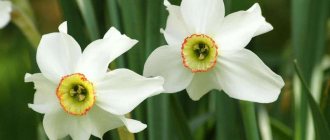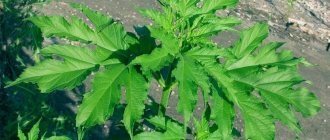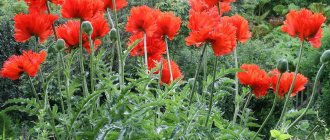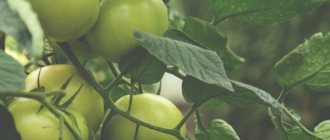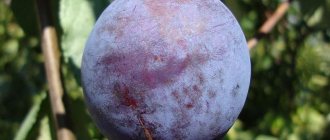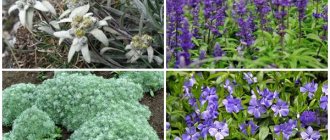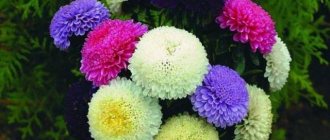Legends and origin story
There are many beautiful legends telling about the origin of a passionate flower with delicate velvet petals that can put you to sleep.
One of them says that when God created the earth, water, flora and fauna, everything turned out very beautiful. But under the cover of night these beauties were hidden. Night tried to open them for its hour with the help of the stars, but this attempt was unsuccessful. And then God decided to help the Night and created the Sleep and its dreams.
Over time, because of their cruelty, people began to have not only good dreams, but also terrible dreams and nightmares. Then Dream, in desperation, thrust his magic rod into the ground, plunging him into sleep. The rod came to life and turned into a poppy, without losing its ability to put one to sleep and cause visions. Since then, poppies have been considered dream-inducing plants.
According to another legend, the poppy is a symbol of earthly fertility and marriage due to its extreme fertility - its capsule contains up to 30 thousand small seeds that give life to new plants.
Many gods are depicted decorated with poppies. The goddess of earthly fertility, Persephone, is depicted wrapped in intertwined poppy flowers. The Greek god of dreams and reveries Hypnos (among the Romans - Morpheus) is depicted holding poppy heads in his hands or crowned with a wreath of these flowers. On the head of the God of Death Thanatos - a young man with black wings, wearing black clothes - also rests a wreath of poppy flowers. And this is not a complete list.
It is obvious that this seemingly simple flower is capable of making an impression. It entered the history and religion of different countries and many peoples due to its ability to induce sleep.
When to replant oriental poppy?
Since this plant is a perennial, you can imagine what size it can reach in 3-5 years of life. A large spreading bush can be divided, thereby propagating it. To do this, it is not necessary to completely remove the plant from the soil; you can try to carefully separate a fragment of the rhizome from the side.
It cannot be said that the oriental poppy takes root very well in a new place, but if you pay attention to it and surround it with care, the result will be crowned with success.
It should be borne in mind that its roots are quite fragile, so to get the best result, separate the roots from the sides. The best time for this operation is the month of May, when the plant has not yet begun to bloom. To minimize the risk of rhizome fracture, the separated fragment should be covered with a large lump of earth. When can you replant Oriental poppy? The Internet will help you answer this question by finding many recommendations that mention the dormant period of the flower. It turns out that after the plant has flowered, the procedure of dividing the rhizome can also be carried out.
The method of propagation by dividing the bush is also good because after the procedure it provides an almost 100% guarantee of the preservation of all varietal characteristics of the species. Thus, the new bushes will have similar decorative features as the mother plant. To do this, the poppy bush is completely removed from the soil along with the earthen lump, after which it is very carefully divided into several fragments. These parts are called divisions; they are seated, maintaining a distance of 70-80 cm from one another. Remember that with the onset of winter, in the first year of life, such plants will need to be covered with a special covering material.
It is also possible to propagate oriental poppy by cuttings. To do this, you need to separate the side shoots from the bush; weak representatives are usually chosen for this role. After cutting, the cuttings are kept in a disinfectant composition for about 24 hours (you can also use the Kornevin solution to stimulate root formation). At the end of the specified time, the shoots are planted in containers with moist, loose soil, covered with plastic film or transparent disposable (plastic) glasses. After the roots have formed, the cuttings are transplanted into a flower bed. If for some reason it is necessary to move the whole bush to a new place, it should be dug up with a ball of earth immediately after flowering.
General characteristics of the plant
Poppy is an annual, biennial or perennial herbaceous plant of the Poppy family with a developed stem or stemless. The height of the plant can reach 150 cm depending on the variety. Several dozen species belong to it. The most famous is the sleeping pill opium poppy.
The poppy root system is fragile, so the plant reacts very poorly to transplantation. But if you still need to replant it, then you need to wait until spring or the end of summer.
The leaves of the poppy plant are cut into one, two or several parts. They can be smooth, but usually have small terry or even hairs on them.
The plant attracts attention with its amazingly beautiful flowers, similar to a fire bowl with black coals in its middle. Large flowers with rich, delicate petals, bathed in dew, and countless stamens in the center, open with the first rays of the sun. Their petals are painted scarlet, snow-white, pinkish, golden and even black in all possible shades.
The fruit of the poppy plant is an oblong, ovoid capsule, in the middle of which small seeds ripen in huge quantities. When a ripe capsule ruptures, the seeds are scattered over considerable distances. Seeds can also spill out through openings in the box and be carried by the wind.
Gardeners also value this plant for its ease of cultivation and low maintenance requirements. With enough sunlight, poppy grows in any soil, even depleted soil.
When to sow oriental poppy?
If annual poppies bloom in the same year, then perennial poppies will most likely show their buds to the world the next season (for example, if you sow the seeds in the fall). If you sow in the spring, the flowers on the bushes will appear later than with autumn sowings. By the very beginning of summer, poppies bloom within just 2 weeks. The poppy fruit is like a box covered with a “lid” on top; when this box dries out, small holes form between it and the lid. If you leave boxes with seeds on the bushes, then by self-seeding, seeds will spill out through these very holes. This cycle can be repeated annually if the boxes are not collected.
How to collect oriental poppy seeds? There is nothing complicated here: you need to wait until the boxes are completely dry, carefully trim them, and store them in a tight fabric bag. You can leave small, grayish-black seeds directly in the boxes, or you can remove the lid and pour the seed into a glass container. Sometimes in areas you can see flower heads wrapped in gauze cloth - this is also one of the ways to collect seeds, which does not allow the seeds to spill onto the ground. As you know, poppy seeds can be used not only for growing flowers, they are also a food product that is quite widely used in cooking.
Boxes with seeds, photo:
How to sow oriental poppy? Seed material is buried in specially designed beds or immediately directly into the ground in the spring, if before winter, then in the fall. As mentioned above, after sowing, flowers appear in the second or third year.
The seeds themselves are very small, they don’t even have to be deeply buried, you can just press them lightly and cover them with special material for plants. If the seeds were sown to obtain seedlings, then at the stage of appearance of 5 young leaves, the plants can be dug up and planted in flower beds or beds. However, most often this seedling method is not used, but the seeds are immediately sown in the intended permanent place of residence of the flower.
Oriental poppy, photo:
There is an opinion that for subsequent comfortable germination, poppy seeds need stratification, that is, a “shake” with cold. That is why experienced gardeners recommend sowing in early spring, when the likelihood of frost is still high. If you live in regions with a mild climate, sow poppy seeds in the fall, so the seeds will receive the necessary stratification and will sprout safely when spring arrives. At the site of the future flower garden, simply loosen the soil with a rake, scatter the seed, sometimes it is mixed with sand - this is at your discretion. The seeds are sprinkled on top with a thin layer of loose soil. The main thing is not to deepen them too much, since later they simply will not have enough strength to stretch up. The planting site should be watered, but carefully, without flooding it with water.
Annual species
One of the easiest plants to grow and care for is annual poppies. They have one highlight - a fragrant aroma.
Opium poppy
One of the most common types of annual poppies among gardeners is the sleeping pill, also known as the opium poppy (Papaver somniferun). The plant grows up to 140 cm. Its leaves are grayish-green in color, have a bluish tint and are covered with a waxy coating. Large flowers of simple or goblet shape grow up to 16 cm in diameter. Their petals are ordinary, but there are also varieties with carved edges of the petals.
The opium poppy blooms in mid-summer with scarlet, snow-white, pinkish, bright purple or even black flowers, and the color of the petals can be either monochromatic or multi-colored. An important fact: the varieties used in ornamental gardening do not contain prohibited substances in their chemical composition.
There is a double variety of this plant species - the peony poppy (Papaver somniferum paeony). Its flowers are spherical in shape with a diameter of up to 15 cm.
Among the most worthy varieties of sleeping pills, or opium poppy, are:
- Danish flag - the variety is distinguished by large fringed inflorescences of a specific color - in its center on a bright red background a cross-shaped pattern of white, cream or pale yellow is visible;
- Merry Family - the variety is distinguished by a unique seed capsule, its appearance reminiscent of a hen with chickens;
- White clouds - a variety with gorgeous double inflorescences of snow-white color;
- Yellow clouds - a variety with spectacular double flowers of a golden hue;
- The Black Clouds variety has very dark purple petals. The inflorescences are large, double;
- the Cardinal variety has double flowers of bright red color with a diameter of up to 9 cm;
- The Tsartroza variety grows as a branched bush up to 90 cm in height. Double flowers, up to 10 cm in diameter, delicate light pink with a white spot at the base of the petals;
- The Zverg Rosenrot variety grows as a bush up to 60 cm in height. Its large double reddish-pink petals with a snow-white spot at the base have an unusual oval shape. The petals inside the inflorescence are fringed.
Varieties of self-seeding
A type of annual poppy that is very popular among flower growers, the self-sown or wild field poppy (Papaver rhoeas) grows up to 100 cm in height. Under natural conditions, its small inflorescences can be either simple or semi-double, with satin petals of the traditional scarlet color and black middle. But under cultural conditions of growth, self-seeded poppy inflorescences are found in peach, rich orange, delicate cream shades or glamorous pink.
Among the most attractive varieties of self-seeded poppy are:
- The Shirley variety grows up to 75 cm. The variety is extremely decorative thanks to simple or semi-double flowers of rich colors with a snow-white rather than traditional black center. The stamens of the flower are also white;
- variety Silk moiré with semi-double inflorescences. The edge of each petal is painted in a rich color, turning closer to the center of the flower into a delicate pastel shade of the same color scheme.
It should be noted that self-seeding is a controversial annual. Plants that produce late shoots can overwinter at the rosette stage.
But some perennial poppies can demonstrate very uncertain properties.
Holostalked species
Against the backdrop of their natural habitat, the poppy (Papaver nudicaule), or saffron poppy (Papaver croceum), or Iceland poppies, is a type of perennial poppy. But in floriculture conditions it is cultivated as an annual plant
The plant is not tall, only up to 30 cm. The leaves growing at the root have a feathery shape and a silver or grayish-green color. The surface of the leaves can be fleecy or smooth. The inflorescences of the holostem poppy, located on strong pedicels, have a small diameter. They come in any shade of white, yellow or orange. These poppies bloom from May until late autumn. The plant is poisonous!!! Moreover, the poison is contained in any part of it
Among the most beautiful varieties of hollow-stem poppy are:
- variety Popskyle grows up to 25 cm tall. The plant is strong and can withstand strong gusts of wind. Large flowers, the diameter of which reaches 10 cm, have rich colors;
- the Sulfureum variety has amazing flowers of an unusual lemon color, small in size;
- the Atlant variety grows in low bushes - up to only 20 cm. Its single large inflorescences of yellowish or white color grow up to only 5 cm in diameter;
- The Roseum variety is famous for its large pink flowers.
The species Gray and Peacock are also grown as annual poppies.
If you still need red poppies
Red poppies are far from common.
Varieties of oriental poppies with red flowers are considered “common” and are bought approximately 30-40 times less often than other colors. Therefore, nurseries and stores practically do not import them. So finding the “Diamond” variety, as luxurious as a blazing fire, for garden decoration is a problem. It is much easier to find scarlet varieties with scalloped petals - the magnificent red color of the variety 'Turkenlouis', the height of the inflorescences is 70-75cm.
Perennial species
Some types of poppies are distinguished by their extraordinary vitality, and, one might say, are ineradicable, thanks to the ability to throw out shoots from pieces of roots remaining in the soil after weeding. These are perennial poppies; their most obvious representatives are the rock poppy and the Atlantic poppy, which are similar to each other. The oriental poppy, a perennial poppy species with exceptional decorative properties, has gained great popularity.
poppy
Most gardeners are unfamiliar with poppy (Papaver rupifragum), also called Spanish poppy. This is a low plant with a chic rosette of silver-colored leaves located in the root zone, which in themselves look very elegant and rich. Its semi-double flowers have satiny petals in a unique orange hue. It blooms profusely throughout the summer with small flowers no more than 2.5 cm in diameter.
Among the interesting varieties of poppy, one can highlight the variety Tangerite Parfait with semi-double inflorescences that appear continuously, one after another, throughout the summer period, subject to constant timely plucking of dried flowers. Particularly vigorous flowering occurs in early summer.
Eastern view
The largest representative of perennial poppies is the most beloved species among flower fans - the oriental or Turkish poppy (Papaver orientale). The plant is tall, can reach 120 cm. This poppy has elegant pinnately dissected elongated, hard leaves and stems, densely covered with hairs. The inflorescences are bright, usually with a black center, of a wide variety of colors, and can reach from 10 to 20 cm in diameter. The blue-black stamens inside the flower look very beautiful.
There are garden varieties with double and semi-double flowers. The period when poppies of this species bloom is limited to only 12-15 days from late May to early June.
Among the interesting varieties of oriental poppy are:
- Beauty Queen - a variety with satin saucer-shaped inflorescences;
- Black and White - this variety is distinguished by snow-white flowers. Their corrugated petals are very delicate, with a dark spot visible at their base;
- Blue Moon variety grows up to 100 cm in height. Very large flowers up to 25 cm in diameter are evenly colored in bright shades of pink with a blue tint;
- The Cedric Morris variety blooms with the largest flowers in pink tones. The petals are wavy. There is a dark spot at their base;
- the Kerlilock variety grows up to 70 cm. Unusual, slightly sloping flowers have a bright apricot color. At the base of their petals there is a black spot. The edge of the petals is serrated;
- the Allegro variety grows only up to 40 cm. The plant is notable for the fact that it begins to bloom already in the year of sowing. Its flowers are large in size and amazingly beautiful.
Flower growers also love the varieties Garden Glory, Mrs. Perry, Caryn, Pettis Plum and many other varieties.
Such types of perennial poppy as Alpine, Amur, white-pink, Scandinavian and a number of other charmingly beautiful, although less decorative varieties, compared to oriental poppy, are also cultivated.
How to grow oriental poppy?
This plant is quite unpretentious and tolerates low temperatures well. Despite the fact that it prefers sunny places, it also grows well and blooms in the shade. Like all flowers, poppies love soil saturated with mineral fertilizers; it can also be pre-fertilized with compost or humus. They give good results when planted in sandy loam soil; under any circumstances, they react very poorly to stagnant water or too much watering. This plant is not afraid of stones in the ground and grows well in sandy soil. Thanks to its long taproot, it extracts moisture from the ground and can go without watering for a long time.
This variety of poppy responds relatively well to replanting, but this process is best done with the onset of autumn, when the time of rain comes. To avoid damage to the roots, for better survival, the transplantation of oriental poppy should be carried out together with a clod of earth. It is necessary to take into account the characteristics of the tap root system of the flower, therefore the depth of digging the soil at the site of the future flower garden should be at least 30-40 cm. During this process, it will be advisable to add compost or humus; per 1 square meter of soil usually add from 5 to 10 ten kg of similar organic fertilizers.
You should know that the maximum period for comfortable growth and abundant flowering of poppy in the same area is approximately 5-7 years, after which its place of residence must be changed. This representative of the plant world is large in size, so even when planting (and replanting), make sure that the distance between the bushes is approximately 50-70 cm.
If you lay peat or mulch around the bushes, it will not only look aesthetically attractive, but will benefit the flower. The plant can be fed with mineral fertilizers with the arrival of spring, during the growth of leaves, as well as during budding, that is, before flowering itself.
Care and reproduction
It is known that to extend the flowering period of poppies, it is necessary to promptly remove faded shoots. But, since poppy is propagated by seeds, to harvest seeds of the varieties you like, several of these shoots must be left until the seed pods are completely ripe. Provided that the bolls remain on the stem, the plant will self-sow abundantly.
Sow seeds mixed with sifted sand before winter or early spring directly into the soil. It is important to choose a sunny area for sowing, since poppy flowers lose their brightness in shaded areas. After the emergence of seedlings, they must be thinned out, leaving 10-20 cm between plants.
The propagation method by seeds for perennial poppy species is slightly different from the propagation method for annual poppy species. Seeds are sown for seedlings in special boxes immediately after they are collected, and with the appearance of 1-2 true leaves, they are planted in special peat pots, which are subsequently dug into the ground.
Some perennial varieties of poppies at the age of 3-4 years can be propagated by dividing the bush. This procedure is carried out only after waiting for the end of flowering.
Poppies do not tolerate transplantation well, which is due to the structural features of the plant's root system. The strongly recessed tap root of the poppy cannot be dug up without damaging it. Therefore, the vegetative propagation method of poppy is rarely used.
The poppy plant is unassuming. Caring for it comes down to timely watering, quite rare. Regular loosening of the soil is encouraged. When fertilized in the form of humus, which doubles as mulch, the plant will respond with brighter flowering and rich leaf color.
In hot and dry summers, it is recommended to systematically remove dried leaves of the plant.
Caring for poppies in the garden
Growing poppies is not difficult. It only needs watering during prolonged severe drought. When the plants are watered, the surface of the soil between them should be loosened, and all weeds should be pulled out. To significantly reduce the number of weeding, watering and loosening, it is necessary to mulch the surface of the area.
It is not necessary to feed such flowers, but it should be noted that they respond very well to feeding. Poppy gets sick very rarely, and harmful insects rarely settle on it, so treatments are carried out only as needed.
Pests and diseases of poppy
If weather conditions are unfavorable, the poppy may be affected by powdery mildew, peronospora (downy mildew), alternaria and fusarium.
Powdery mildew
Powdery mildew is a fungal disease. In the affected bush, a cobwebby white coating appears on the surface of the leaf blades. After a short time, this plaque disappears, but in its place the fruiting bodies of the fungus are formed, which are small grains of brown and black color. This disease significantly inhibits poppy and also negatively affects its yield. As soon as the disease is detected, the bush should be treated with a solution of soda (30 to 50 grams per 10 liters of water) or copper oxychloride (40 grams per 1 bucket of water). Also quite often the drug Medex is used for spraying, while folk remedies such as a mustard suspension or garlic infusion are most effective.
Downy mildew
Downy mildew (peronosporosis) is also a fungal disease. An infected bush exhibits curvature of peduncles and shoots, and brown-red spots appear on the surface of the leaf blades, after which they become deformed. After a while, a violet-gray coating forms on the underside of the foliage on the shoots, which consists of fungal spores. This disease suppresses seedlings, and infected adult bushes grow small boxes containing much fewer seeds. In this case, you need to treat poppy seeds with the same means as when fighting powdery mildew.
Fusarium wilt
Fusarium wilt is also a fungal disease. In the affected specimen, dark spots form on the surface of the shoots and leaf blades. The bush is observed to dry out, with underdevelopment and deformation of the bolls occurring, which become wrinkled and turn brown. When Fusarium disease occurs, the vascular system of the poppy is damaged. This disease is considered incurable. Affected plants should be removed from the ground and destroyed, and the area where they were grown should be shed with a solution of any fungicide.
Alternaria blight
If the plant is infected with Alternaria, then a spotted coating of olive color forms on the surface of the bolls and leaf blades. This disease is also fungal. A diseased specimen should be sprayed with Kuproxat, Fundazol, Bordeaux mixture or Oxychloride.
To prevent the activation of fungal diseases, it is necessary to observe fruit rotation. This means that in the area where poppy was previously grown, such flowers cannot be planted for three years. Also, in autumn, the garden and vegetable garden should be cleared of plant debris that must be burned. At the same time, the soil is dug to the depth of a spade bayonet.
Of all the insects, the one that causes the greatest damage to poppies is the weevil, also called the poppy secretive proboscis. It injures the root system of the plant. The larvae of this insect eat poppy foliage. In some cases, aphids settle on the boxes and shoots. For preventive purposes against weevils, granulated Chlorophos (7%) or Bazudin (10%) must be added to the soil before sowing seeds. If you grow poppy as a perennial plant, then these products must be embedded in the soil between the plants, and after the flowers have sprouted, the seedlings should be sprayed on the foliage 2 or 3 times with Chlorophos solution. The interval between treatments should be 1.5 weeks. If aphids have settled, then the bushes are treated with Aktara, Antitlin or Aktellik.
Poppy after flowering
Faded annual poppies should be removed from the soil and burned. In order for it to bloom longer, it is necessary to tear off the developing boxes in a timely manner. If the seed plants are not touched, then self-sowing will appear in the next season. In autumn, plant debris should be removed from the site and the soil should be dug up.
If poppy is grown as a perennial plant, then after flowering it loses its attractive appearance, and therefore it should be cut flush with the surface of the site. It is not necessary to cover such flowers for the winter. However, if there is a high probability that the winter will have little snow and very cold, then the area must be covered with spruce branches or dried leaves.
POPPY. GROWING AND CARE
Useful and harmful properties
The medicinal properties of the unique poppy plant have been known since ancient times. Poppy seeds normalize the digestive system and relieve dysentery and diarrhea. Using them, you can get rid of insomnia and eliminate some diseases of the upper respiratory tract. Poppy is also widely used in the treatment of cancer.
The harm of poppy is due to its unreasonable use by the person himself. This magical flower serves as the basis for the production of opiates, the excessive use of which leads to drug addiction, destroying the human psyche and bringing terrible suffering to the addict.
Poppy seeds are widely used in cooking as additives in baked goods and a wide variety of sweets and cookies. At the same time, the beneficial properties of poppy seeds are completely preserved provided that they are properly collected and dried without any trace of narcotic substances in them.
The leaves, roots and stems of the plant are used only in medicine . They are not eaten.
Diseases and pests: treatment methods
Poppy plants are damaged by:
- causative agents of fungal infections - developing black bolls, powdery mildew, white and gray rot, etc.;
- causative agents of bacterial infections - spotting of seed pods and leaves, bacterial wilt, bacteriosis of stems occurs. When disease symptoms appear on plants, they should be removed and burned, and the plants should be treated with recommended special preparations (for example, trichodermin, bactofite, planriz, phytosporin). You can also use copper sulfate, Bordeaux mixture or garlic infusion.
- pests - alfalfa cutworm caterpillars, green and black aphids, poppy gall midge, etc. They are controlled with the help of verticillin, actellik, bitoxybacillin-P, Decis-Profi, Bon-Forte, etc.
Sowing time
Poppy seeds must be cold-treated before germination. Therefore, there are two temporary options when you can sow poppy seeds in open ground:
- in cold soil - at the end of autumn or at the end of winter;
- into warmed ground - in March-April (preliminary “hardening” will be required, described in more detail below).
As for choosing a planting site, it should definitely be in the sun: poppies do not bloom well in the shade. This plant loves light, fertile and well-drained soil. Either black soil or sandy loam soil is suitable for it.
Stratification of poppy seeds
Pre-sowing preparation is absolutely necessary. To bring the seed to the desired state, it is placed between layers of gauze and placed in the refrigerator for 2 months. Accordingly, this needs to be done in January or February in order to sow the seeds in open ground in early spring. For stratification, the coldest place in the refrigerator is suitable - the lower vegetable compartment.
Stratification is a simple but mandatory condition for the preparation of seed material for many plants. For example, matthiola, whose seeds are similar to poppy seeds. But purchased seeds (bought not second-hand, but in garden stores) do not need such stratification. They are sold already prepared for sowing, which the manufacturer usually indicates on the packaging.
